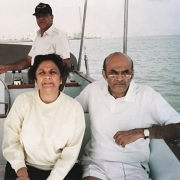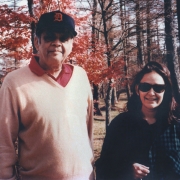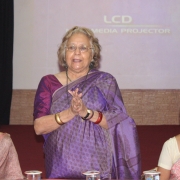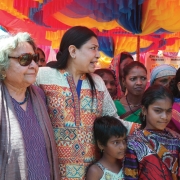
People
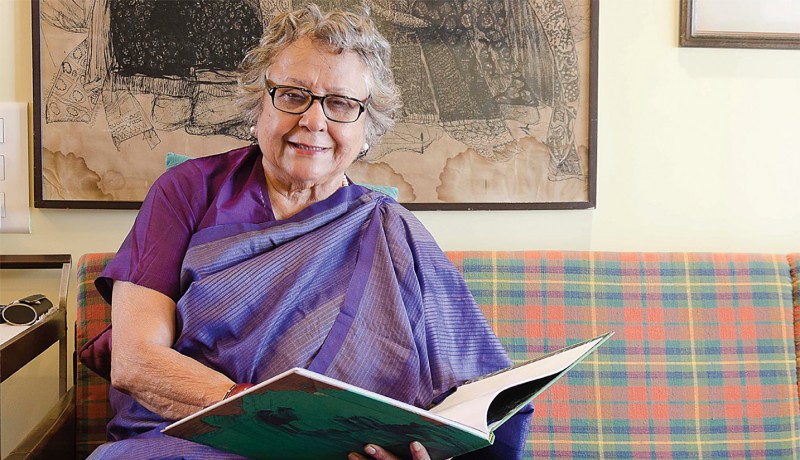
Over the past 5,000 years, India has crafted many a fascinating story on its 7,500-km coastline. From the world’s first tidal dock circa 2300 BC in Lothal, the ancient Silk Route and the establishment of East India Company in the eastern coast to today’s modern container ports, the country has been a crucial link in the world maritime trade,” says Asha Sheth, chairperson of Vasant J Sheth Memorial Foundation and former vice-chairman and currently a member of the Indian National Trust for Art and Cultural Heritage (INTACH). “However, there was a time when the significance of India’s rich seafaring past was overlooked. Today, as a sign of changing times, maritime heritage is finally finding pride of place.”
A pioneer in documenting and promoting India’s maritime heritage, Sheth has played a vital role in preserving this invaluable part of India’s history by highlighting environmental issues relating to coastal activities and garnering social support. Unconventional in thinking and independent in her endeavours, she produced the documentary fiction film, Chattarbhang, on untouchables in Uttar Pradesh in 1976 and was one of the founder members of the Museum Society of Bombay at the Prince of Wales Museum in 1963. The only daughter of K D Malaviya, considered the father of the Indian oil industry, and wife of Vasant J Sheth, a pioneer and visionary of the Indian shipping industry, Sheth has charted her own course. In an exclusive conversation with Sai Prabha Kamath, the 83 year-old talks about her family, journey and vision for the country’s coasts.
You were brought up in a family of freedom fighters. Please share your memories of your father K D Malaviya’s involvement in the freedom movement.
I was born in a family of eminent Brahmins from Allahabad. We lived a simple and happy life in a joint family. My father was a very dynamic and bold person. He was noted as he was part of the Bengal krantikari and the British were keen on tracing him. During this period, Pandit Jawaharlal Nehru spotted the young brave man in my father and started giving him work at the Congress office in Allahabad. During the freedom movement, my father was imprisoned several times by the British; Nehru was his fellow inmate during one such confinement. In fact, there was a time when all male members of the family were in prison. However, my grandfather Baldev Malaviya—nephew of Bharat Ratna Pandit Madan Mohan Malaviya—was an orthodox and rigid person; he did not like my father’s involvement in the freedom struggle.
How do you recall your participation in the freedom struggle?
Though I was very small, I was proud to be part of the struggle. During an All India Congress Committee meeting in Allahabad, where Mahatma Gandhiji was present, young lady workers participated wearing yellow khadi saris. I was too small; I was wearing a frock! I joined them in serving water to the party workers and, finally, I remember being pulled up on stage where all the great leaders including Gandhiji were seated.
Did you ever think of taking up politics as a profession?
After my father’s death in 1981, when I visited his constituency—Basti [now Siddharthnagar] in East Uttar Pradesh—to meet the workers of the Congress Party, I was received with huge enthusiasm and affection. My good rapport with these people made me continue visiting the area. Congress was the major party at that time and I regularly visited the village party office to meet the workers. I used to visit the schools and talk to teachers. Slowly, I established a pattern of socially committed work, which moved towards the concerns of villagers’ health. I organised several medical camps that got a fabulous response. I got many appreciation letters from senior political leaders who were often not affiliated to political parties. Before my father’s death, there were often discussions on me joining politics. In fact, my father said I would do very well in politics but I should give priority to my husband’s health as he had a heart ailment. After my husband’s death in 1992, I had to gradually stop my visits and work as I took on the responsibility of running the Vasant J Sheth Memorial Foundation and became a director on the board of Great Eastern (GE) Shipping Co Ltd.
Your husband Vasant J Sheth was a Bombay-based businessman from a different community. How did the marriage come about?
After India gained Independence, we moved to Lucknow as my father became a deputy minister in the Uttar Pradesh government. In the early 1950s, my father quit Congress for a brief period. During this time of uncertainty, my mom was worried about my future; she felt I should get married and settle down. I was 18 then and doing my bachelor of arts at Isabella Thoburn College in Lucknow. Though I wanted to study languages in Switzerland and become an interpreter at the UN, my father and some close friends arranged my marriage in the Sheth family of Kathiawad, Gujarat. My father, who used to have very progressive views, liked the idea of an inter-caste marriage—it was his strong belief that such marriages would integrate India. My grandfather, however, was opposed to this proposal. Despite this, the marriage happened.
Indeed, such deep patriotism must have prompted your father to fight for India’s oil industry.
Yes, with Nehru’s unstinted support, my father—then Minister of Natural Resources—founded ONGC in 1956, making India self-reliant in the hydrocarbon sector. I do not wish to go into the details as there are books written on the subject. To establish the Indian oil industry was an extremely important period in Indian contemporary history and remains a key factor in India’s economic growth.
Your husband was a pioneer in the Indian shipping industry. Please tell us a little more about him.
My husband was a remarkable person. He was my father-in-law Jagjivan Ujamshi Mulji’s blue-eyed boy. The foundation stone for the shipping venture was laid by my father-in-law, an enterprising sugar trader in Mumbai who started the practice of fair-price shops for an efficient sugar distribution network in the country. My husband took over the idea of the shipping business as this was discussed in the family, led by my father-in-law. His ailing health didn’t deter him from setting up GE Shipping Co, India’s largest private-sector shipping company. For a young entrepreneur, it was, in fact, challenging to manage a completely new industry—hitherto controlled by the British—under a socialist government. Under his leadership, GE Shipping pioneered tramp servicing [shipping without a fixed schedule or published ports of call], which transformed Indian sea logistics. He loved the company like his baby and shipping became his passion. My husband was also actively involved in the cause of maritime education. When he passed away at 62, he left behind great goodwill among shareholders and business associates.
Did you ever think of joining him in the family business?
My husband wanted me to understand and get involved in the business. But, unfortunately, I was not interested. Money has never been a motivator for me. I was always more inclined towards the arts and immersed myself in cultural activities. And my husband was very accommodating. Eventually, after his death, I served GE Shipping as a director for more than two decades. I am not sure whether I contributed much to the company, but during this period I actually began to enjoy learning about business.
You were one of the founder members of the Museum Society of Bombay. Please share more about your involvement in the arts over the years.
I studied Indian art at the Prince of Wales Museum, where I was one of the founder-members of the Museum Society of Bombay in 1963. Today, it is the oldest such society in India, continuing excellent work in educational activities. I also used to attend Ebrahim Alkazi’s plays regularly. I got involved in the process of contemporary art through interactions with artists such as M F Husain, Ramkumar, Tyeb Mehta and Krishen Khanna and started a small collection of contemporary and classical art. The movement of contemporary art has changed enormously from the 1950s to the present. The process of collection was often a help to the struggling artist as well as a foresight! In my case, it was an instinctive process. I purchased paintings to put them on ships where the walls were, otherwise, lifeless.
As the chairperson of the Vasant J Sheth Memorial Foundation, what are the projects dear to your heart?
The Foundation promotes maritime education, which was close to my husband’s heart. In 1994, the Indian Institute of Management, Ahmedabad, offered a first-of-its-kind management course for shipping with the Foundation’s research sponsorship and it ran for nine years. Personally, I consider this a milestone for the Foundation. We have been giving a scholarship for meritorious students from a poor background. We have also undertaken healthcare projects such as monitoring an emergency burns wing at the Alang ship-breaking yard and upgrading the Seamen’s Ward at St George Hospital, Mumbai. And, we have been organising lectures to address and support social and environmental issues relating to maritime activities and heritage.
Is enough being done in the area of maritime heritage?
The country has a huge coastline and rich history of maritime trade and culture dating back to 2300 BC. We traded with Africa, Oman and the Middle East even thousands of years ago. However, we only know of emperors who ruled our lands; very little is spoken about our maritime history. In the 1990s, when I started studying and documenting our coastal landmarks—from Gujarat to Bengal—there was not much being done in this area. In fact, people didn’t take me too seriously. Today, it gives me immense satisfaction to know that the interest levels have increased and concerted efforts are being taken to preserve and document it. Indeed, Prime Minister Narendra Modi has given a major thrust to our maritime history by asking the shipping ministry to build a large-scale maritime heritage complex at Lothal [the oldest manmade tidal dock of the Harappan era in Gujarat].
What keeps you busy today?
My full energy is now focused on reading and researching about history and maritime heritage. I am currently reading two mindboggling and brilliant books—Sanjeev Sanyal’s The Ocean of Churn: How the Indian Ocean Shaped Human History and Lincoln Paine’s The Sea and Civilization: A Maritime History of the World. I am also happy to be part of a committee appointed by the Ministry of Shipping to develop the upcoming maritime heritage complex at Lothal. My interest continues in the cultural activities and history of the country, which I find very fulfilling.
Your only daughter Ketaki is an internationally acclaimed photographer and is playing an active role in the Foundation’s activities too….
Ketaki is a versatile photographer with a great vision; she has four books including A Certain Grace—The Sidi: Indians of African Descent and Twinspotting to her credit and is working on the fifth one. She is an integral part of the Foundation and manages health, education and our unique and much-loved annual lectures.
What is your vision for the country in the area of maritime heritage?
All coastal states have an interesting maritime history. If each state develops this information and sets up museums or even small centres to showcase their trade, culture and heritage, I will be happy.
What is your message for silvers?
Keep yourself engaged—whether it is playing with grandchildren or becoming grandparents to poor children. Don’t give up and contribute to society in whatever way possible. Take care of your physical and mental health, and stay happy.
Photograph by Haresh Patel Archival photo courtesy: Asha Sheth Featured in Harmony — Celebrate Age Magazine December 2016
you may also like to read
-
For the love of Sanskrit
During her 60s, if you had told Sushila A that she would be securing a doctorate in Sanskrit in the….
-
Style sensation
Meet Instagram star Moon Lin Cocking a snook at ageism, this nonagenarian Taiwanese woman is slaying street fashion like….
-
Beauty and her beast
Meet Instagram star Linda Rodin Most beauty and style influencers on Instagram hope to launch their beauty line someday…..
-
Cooking up a storm!
Meet Instagram star Shanthi Ramachandran In today’s web-fuelled world, you can now get recipes for your favourite dishes at….



